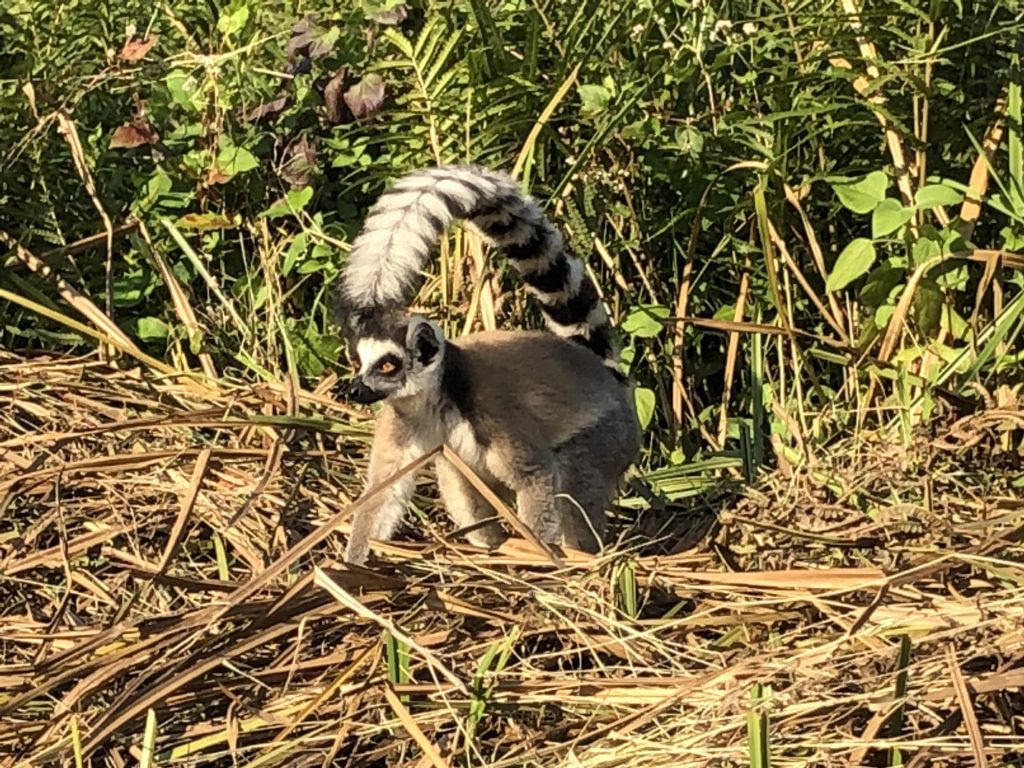Written by my husband, Steve:
The island country of Madagascar is, along with the Galapagos Islands, a powerful magnet for those of us drawn to concentrations of rare, isolated, and endemic (occur nowhere else on earth) species. For example, there are more than 11,000 endemic plant species. At least 80% of the wildlife is endemic.
From 1999 to 2010, 615 new species were discovered in Madagascar, including 41 mammals and 61 reptiles. You might be enchanted by the baobab trees, or the leaf-tailed geckos, or the tenrecs, or the fossa, or the chameleons. I was excited by the possibility of encountering any of these wonderful enigmas of nature, but I was most enthused about realizing another lifelong dream – seeing lemurs in the wild!
Lemurs are primates – that order of mammals that include the great apes (yes, us!), monkeys, and tarsiers, and which have advanced development of binocular vision resulting in stereoscopic depth perception, specialization of the hands and feet for grasping, and enlargement of the cerebral hemispheres. In other words, we have a lot in common. Depending on the source consult, you might be told that there are 101 species, or 105 species, or 111 species, or 123 species of lemurs! But regardless of that number, all the experts agree that every single species is endangered!
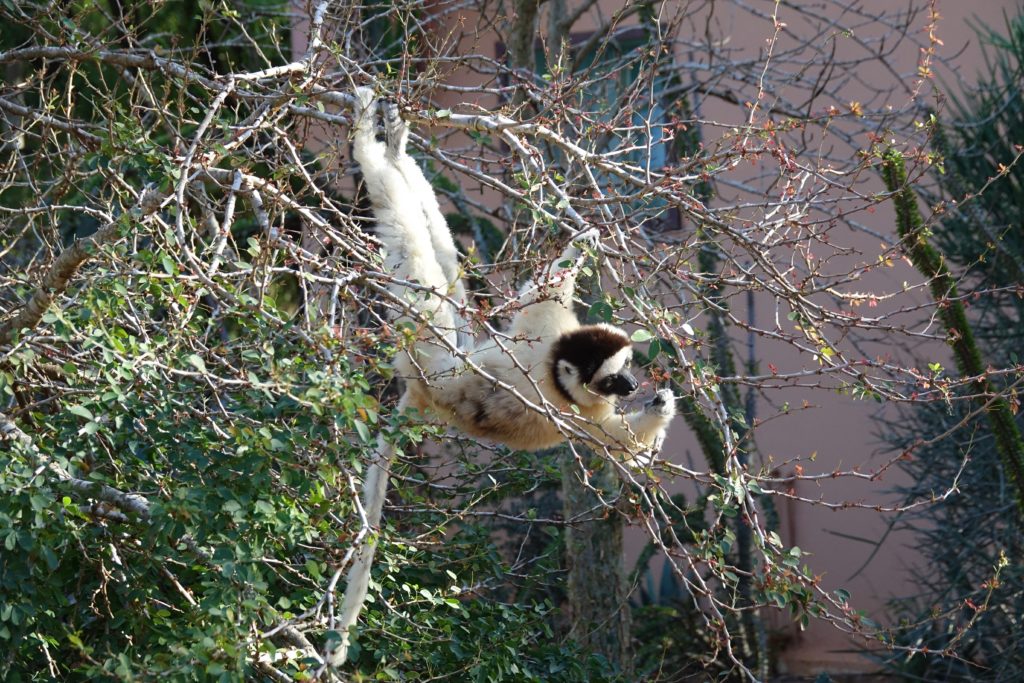
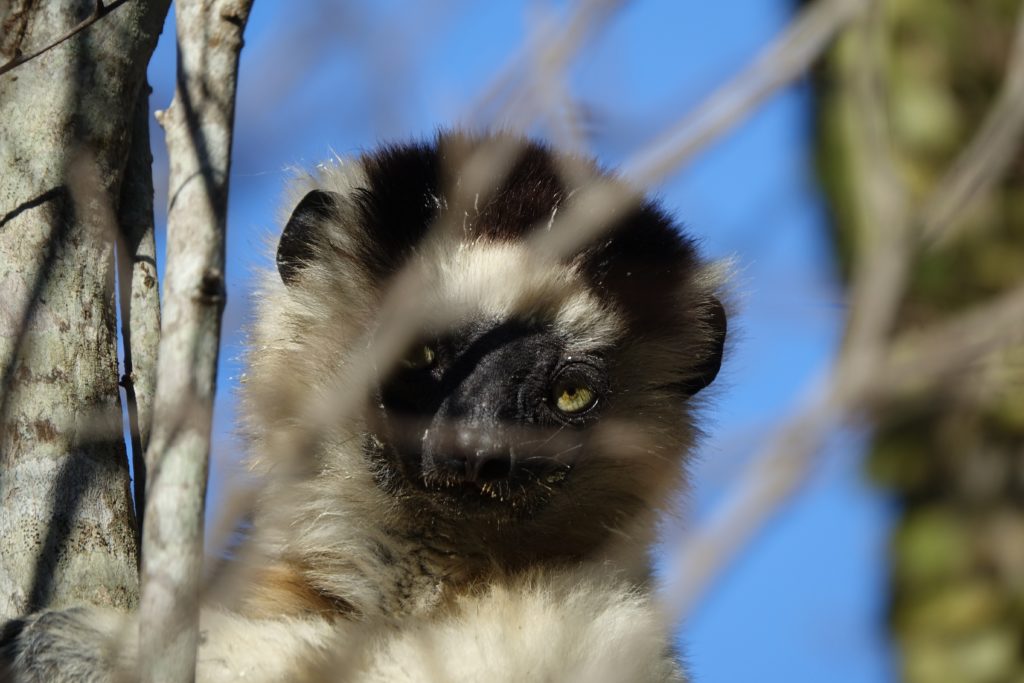 They are endangered for a variety of reasons, including widespread destruction of their forest habitats from slash-and-burn agriculture, illegal logging, charcoal production, conversion to large monoculture plantations of non-native plants, and mining. Some new data indicate that hunting for food and live capture for pets are also now serious threats. A growing system of protected areas and the development of ecotourism have at least apparently slowed the assault, but more sober assessments predict that many will be extinct in our lifetime. For all of these reasons and more, I realized it was time to visit Madagascar.
They are endangered for a variety of reasons, including widespread destruction of their forest habitats from slash-and-burn agriculture, illegal logging, charcoal production, conversion to large monoculture plantations of non-native plants, and mining. Some new data indicate that hunting for food and live capture for pets are also now serious threats. A growing system of protected areas and the development of ecotourism have at least apparently slowed the assault, but more sober assessments predict that many will be extinct in our lifetime. For all of these reasons and more, I realized it was time to visit Madagascar.
Although they are all lemurs, there are many, more evocative names used to better describe them based on such things as size, shared behaviors, and preferred habitat. For example, there are mouse lemurs, dwarf lemurs, sportive lemurs, bamboo lemurs, woolly lemurs, sifakas (based on the sound of their alarm calls), the indri, and the truly strange aye-aye. To maximize our lemur viewing opportunities, we purposely designed our Madagascar itinerary to visit as wide a range of habitats over the widest expanse of the country that we could in the 11 days we had there.
We visited Berenty and Fort Dauphin on the extreme south end where the ring-tailed lemurs, Verreaux’s sifakas, and red-fronted brown lemurs were most common. The enchanting and almost comic ring-tailed lemur is the most well-known.

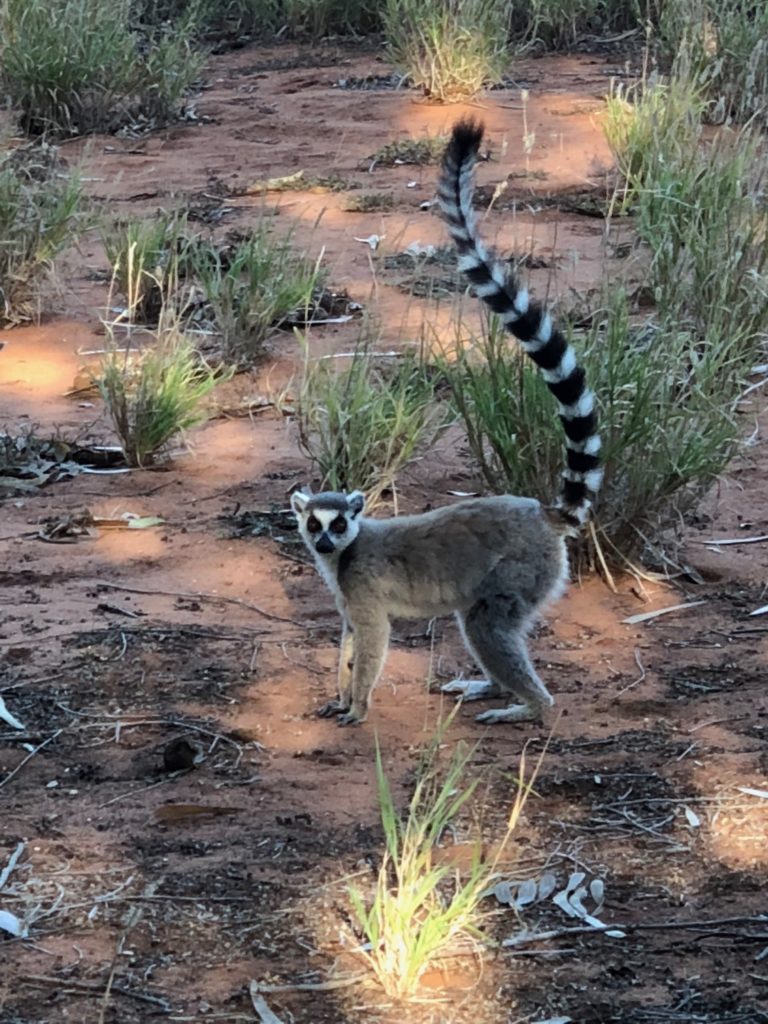
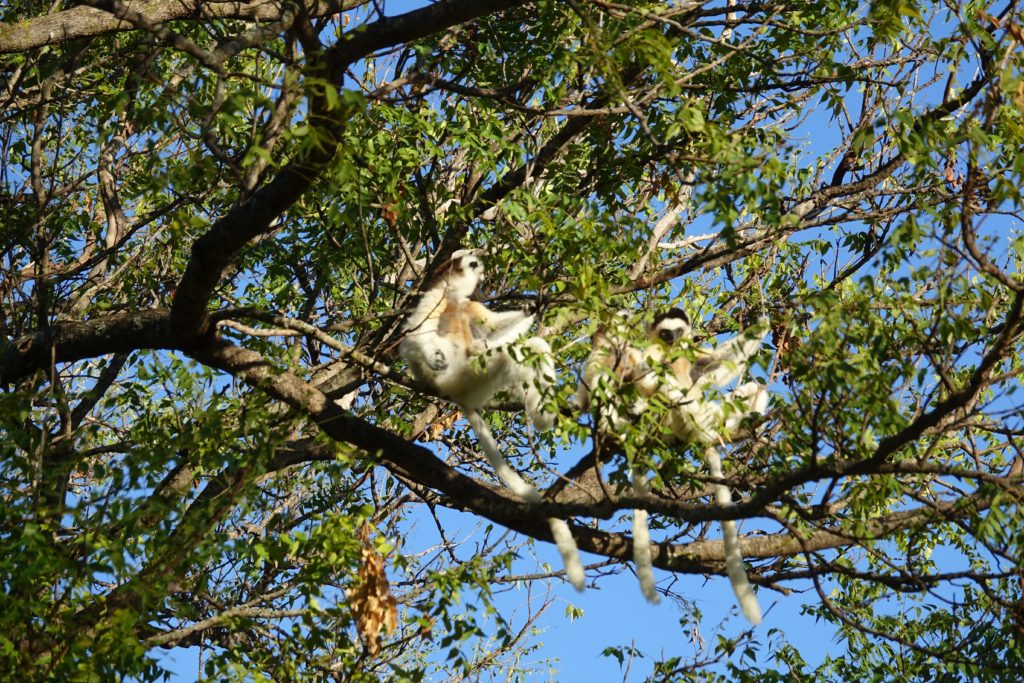
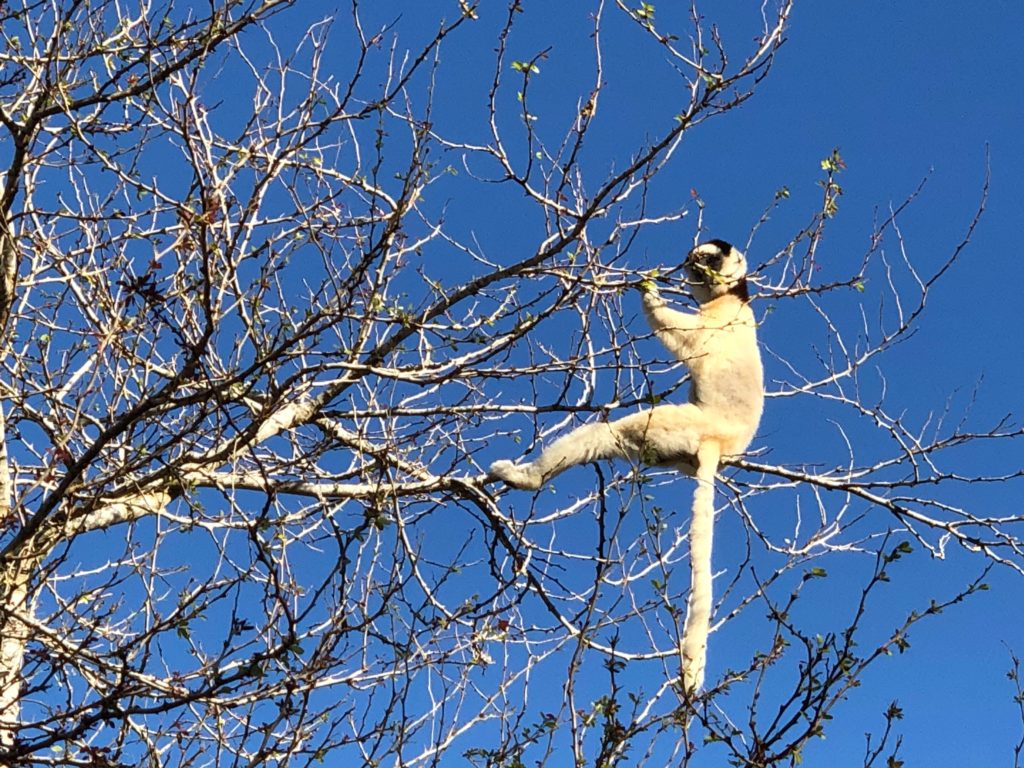
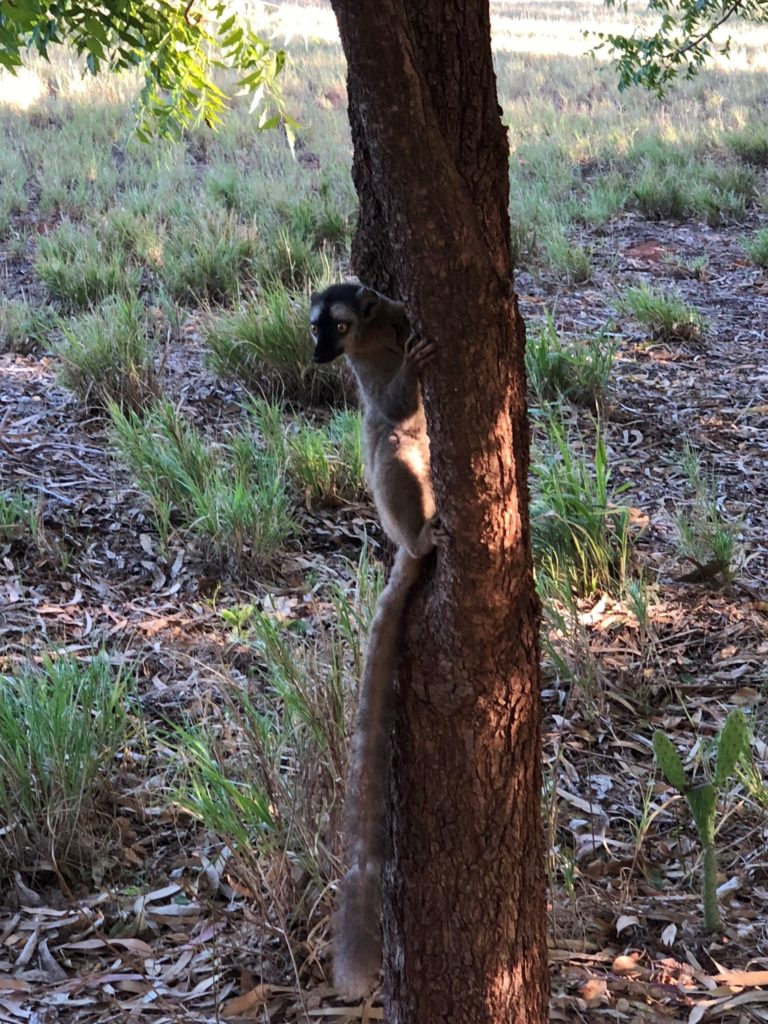 There are few things more smile inducing than watching a lemur (to our delight, the Verreaux’s sifakas) hop across open ground between trees or the ring-tailed and Verreaux’s both warming themselves in the morning sun very much looking like meditating yogis.
There are few things more smile inducing than watching a lemur (to our delight, the Verreaux’s sifakas) hop across open ground between trees or the ring-tailed and Verreaux’s both warming themselves in the morning sun very much looking like meditating yogis.
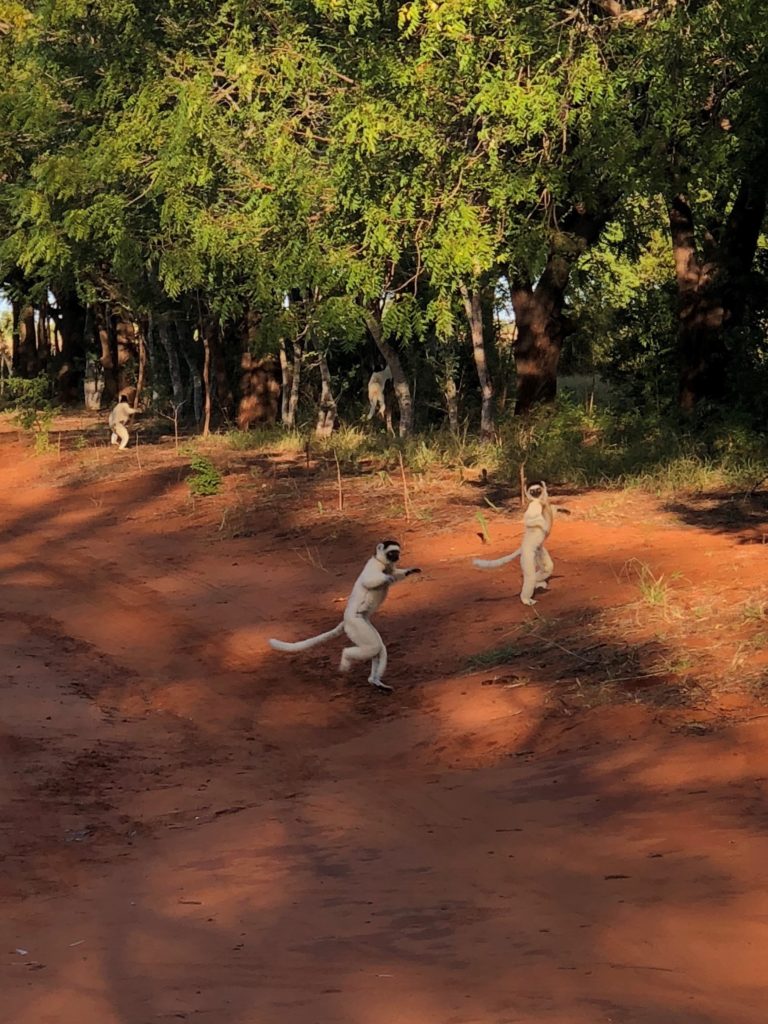
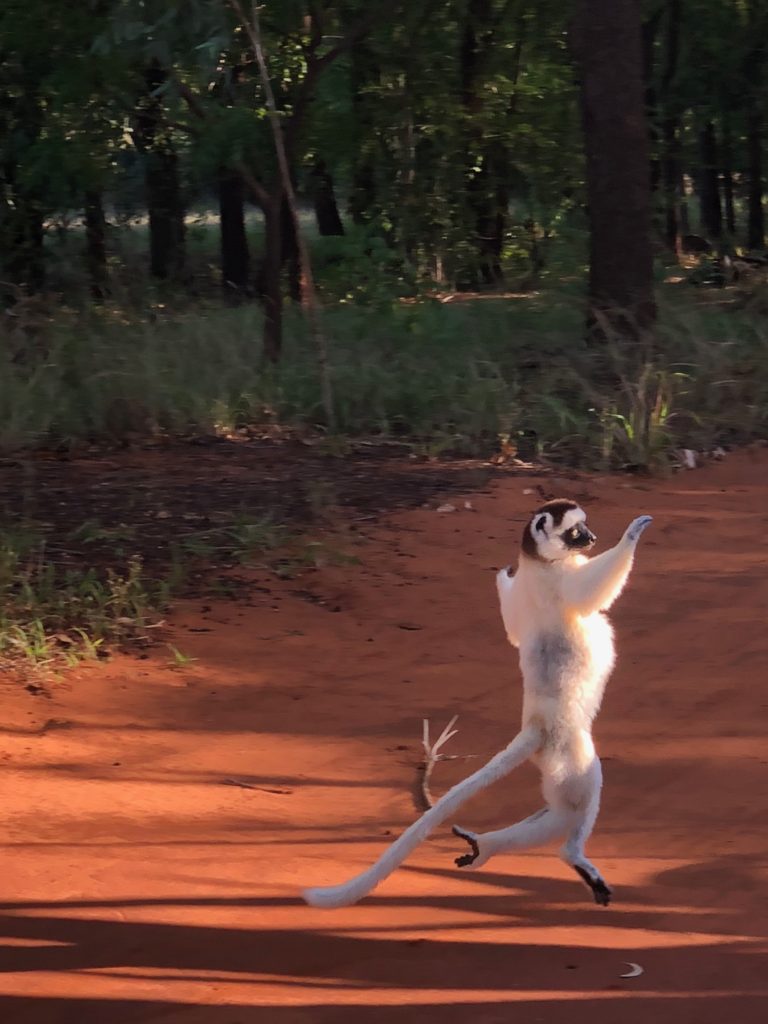


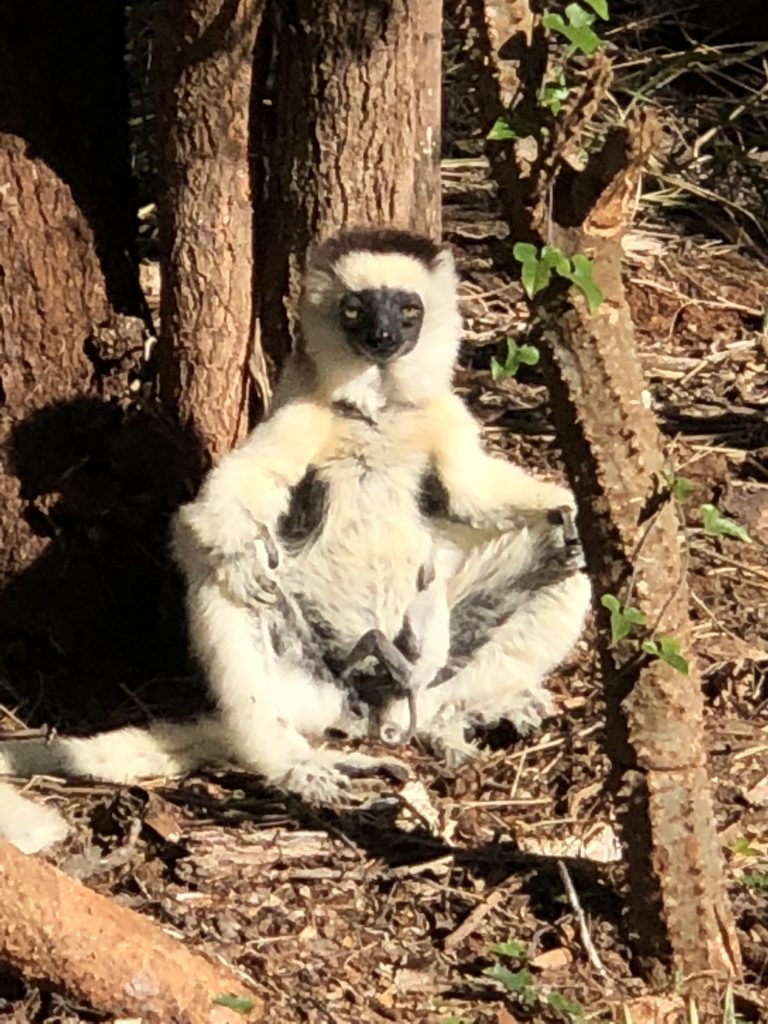 We visited Maroantsetra and Nosy Mangabe in the far northeast where we met the white-fronted brown (only the males have the white on the head, the females are all brown) and the black and white lemurs.
We visited Maroantsetra and Nosy Mangabe in the far northeast where we met the white-fronted brown (only the males have the white on the head, the females are all brown) and the black and white lemurs.
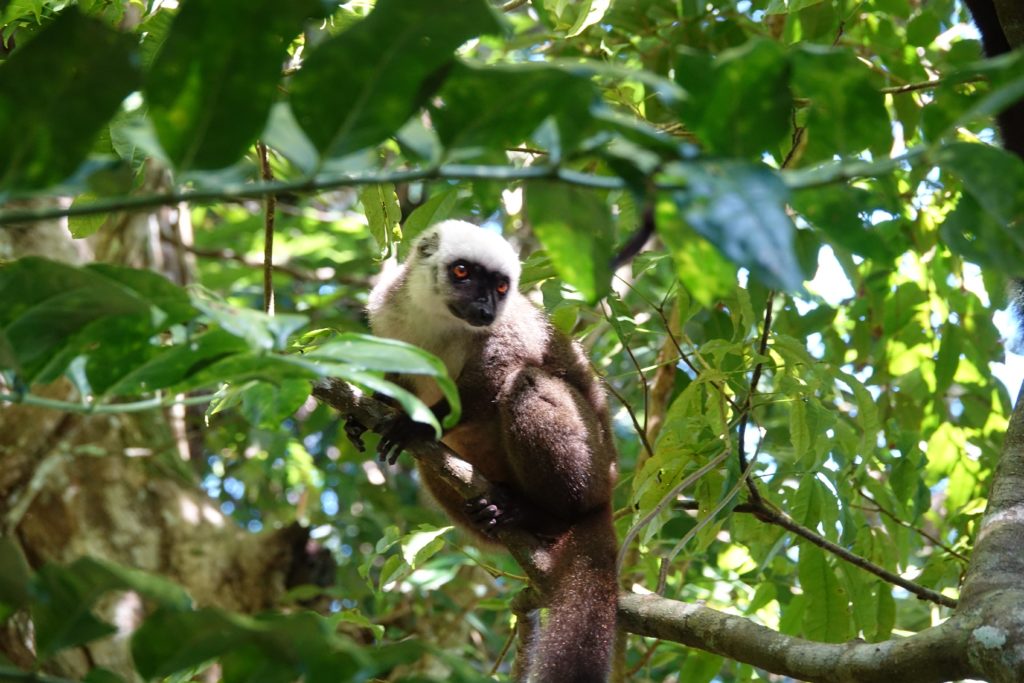

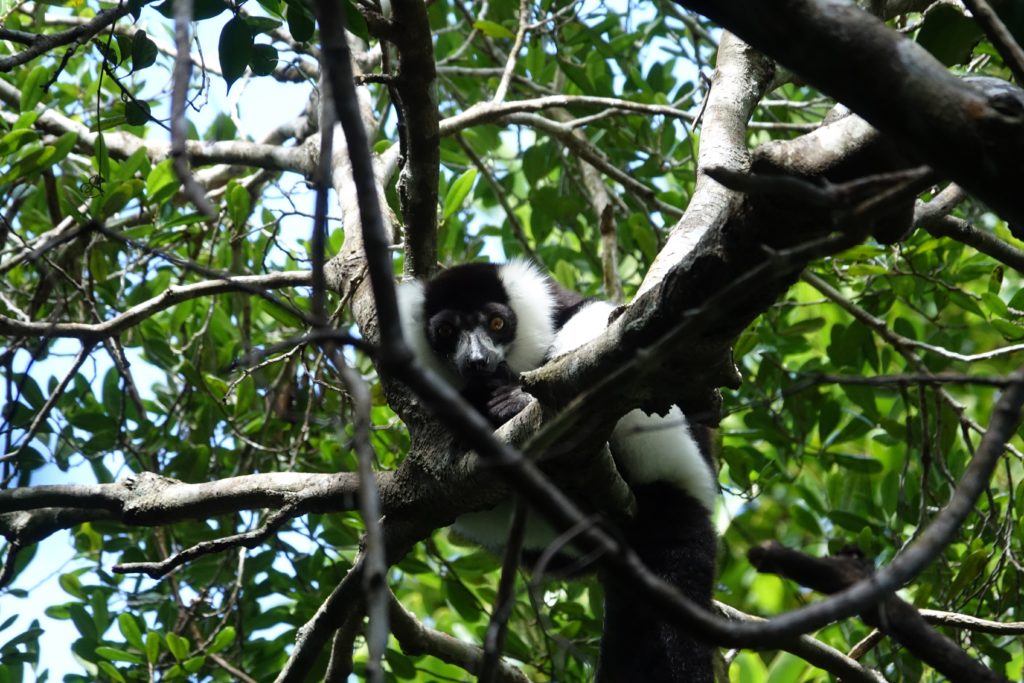 Lastly, we visited Andasibe and Mantadia in the central eastern highlands where we were dazzled by the beautiful diademed sifakas and blown away by the piercing call of the indri – the largest and only tailless lemur.
Lastly, we visited Andasibe and Mantadia in the central eastern highlands where we were dazzled by the beautiful diademed sifakas and blown away by the piercing call of the indri – the largest and only tailless lemur.
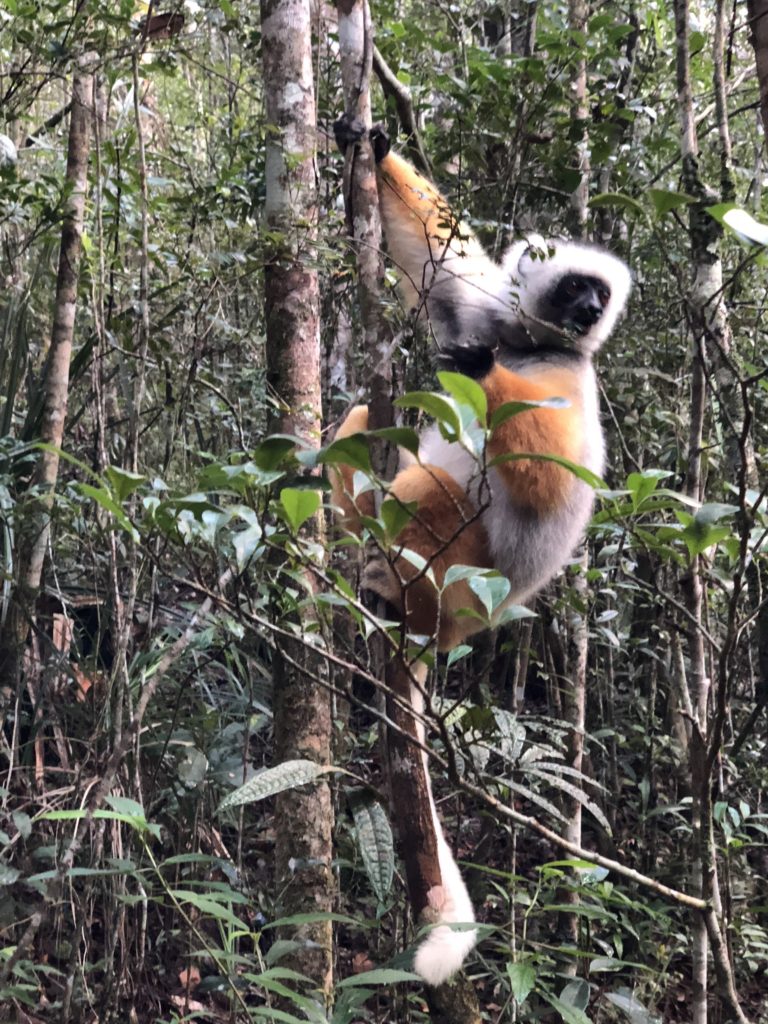
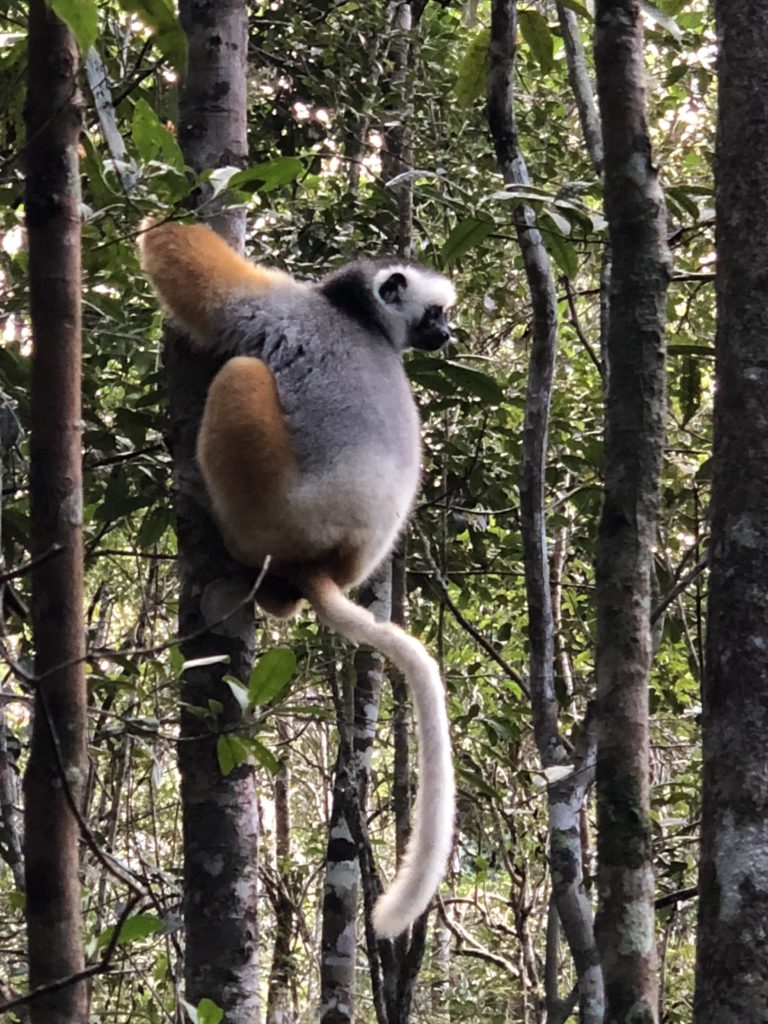
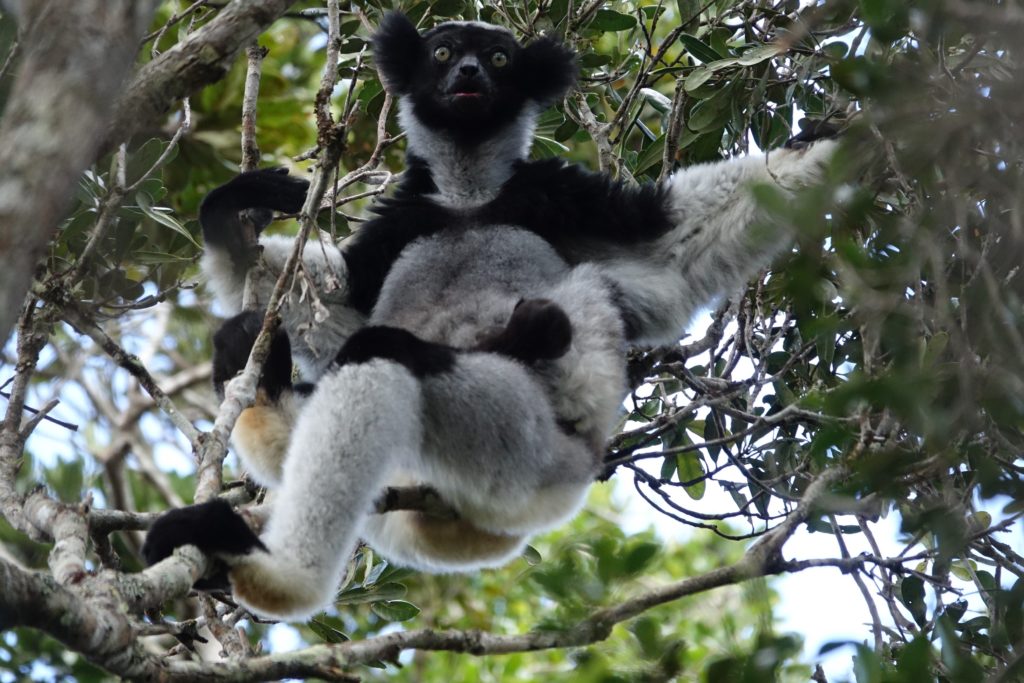
 We walked in rainforest, we walked in the amazingly unique spiny forest, we walked on an island preserve, we walked during the day, we walked at night, under a dazzling moon, and in a drizzling rain. Turns out that many lemurs are nocturnal (especially the small ones who don’t especially like to be predated by owls and such!). On those flashlight-aided walks, we saw mouse lemurs, an Eastern woolly lemur, and sportive lemurs (even encountering one hiding out during the day thanks to a forest guard).
We walked in rainforest, we walked in the amazingly unique spiny forest, we walked on an island preserve, we walked during the day, we walked at night, under a dazzling moon, and in a drizzling rain. Turns out that many lemurs are nocturnal (especially the small ones who don’t especially like to be predated by owls and such!). On those flashlight-aided walks, we saw mouse lemurs, an Eastern woolly lemur, and sportive lemurs (even encountering one hiding out during the day thanks to a forest guard).
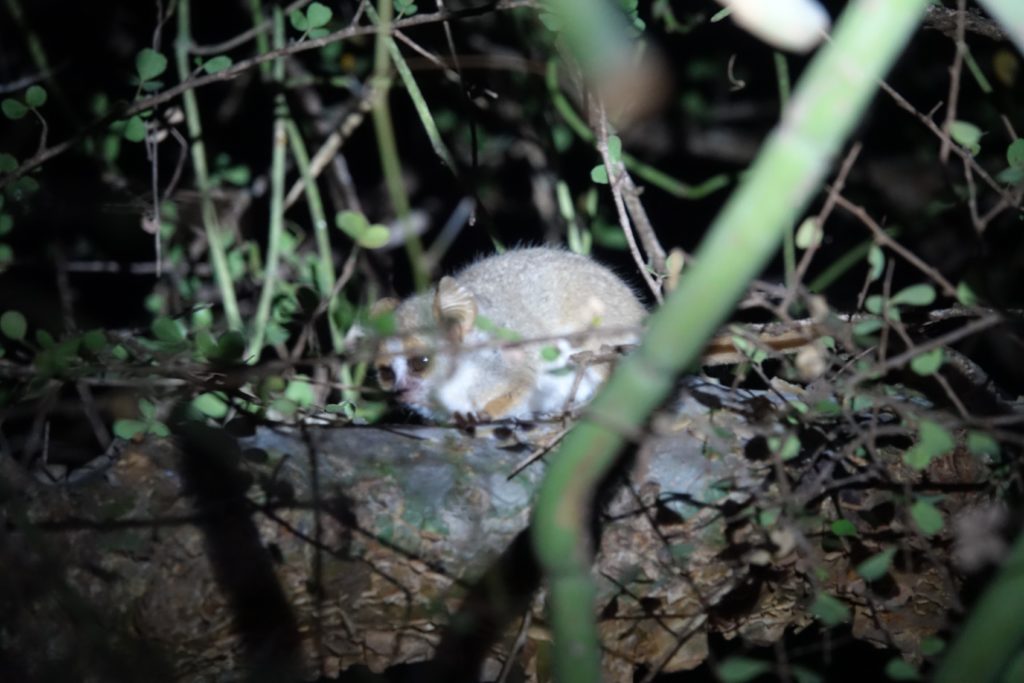

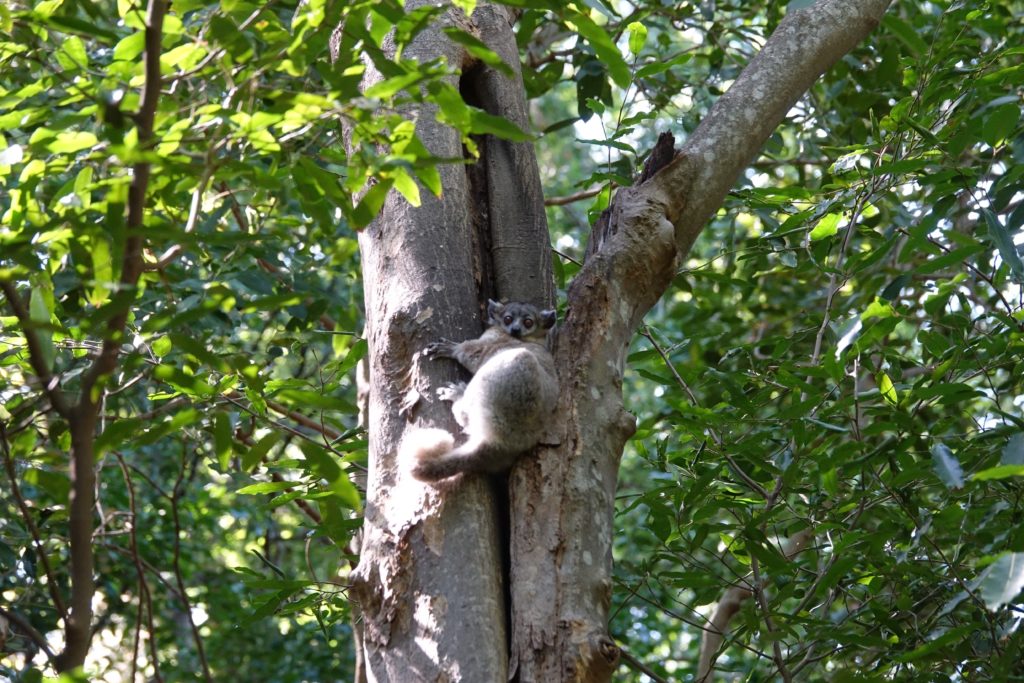 Besides the call of the indri, we were also thoroughly enthralled by the common brown lemurs and ring-tailed lemurs that nonchalantly jumped on and climbed over us on Lemur Island. It is a small reserve in the Vakôna Forest on which we walked and around which we canoed. It is where a variety of lemurs (also including the black and white ruffed and gray bamboo) were prepared for release back in the wild.
Besides the call of the indri, we were also thoroughly enthralled by the common brown lemurs and ring-tailed lemurs that nonchalantly jumped on and climbed over us on Lemur Island. It is a small reserve in the Vakôna Forest on which we walked and around which we canoed. It is where a variety of lemurs (also including the black and white ruffed and gray bamboo) were prepared for release back in the wild.
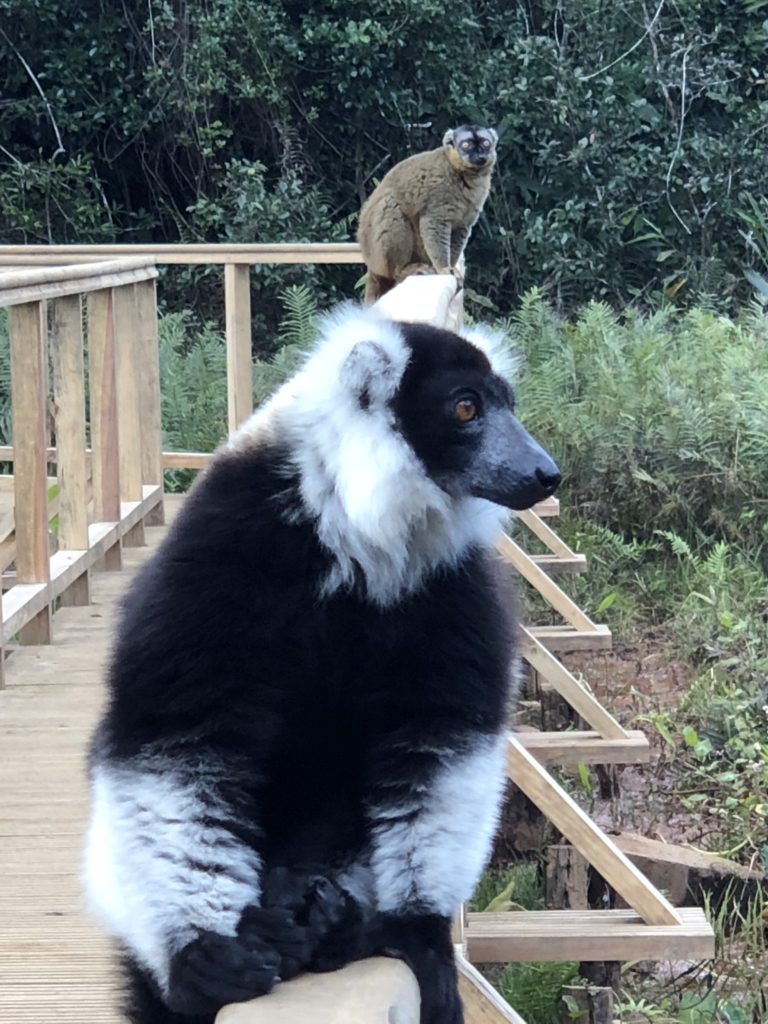
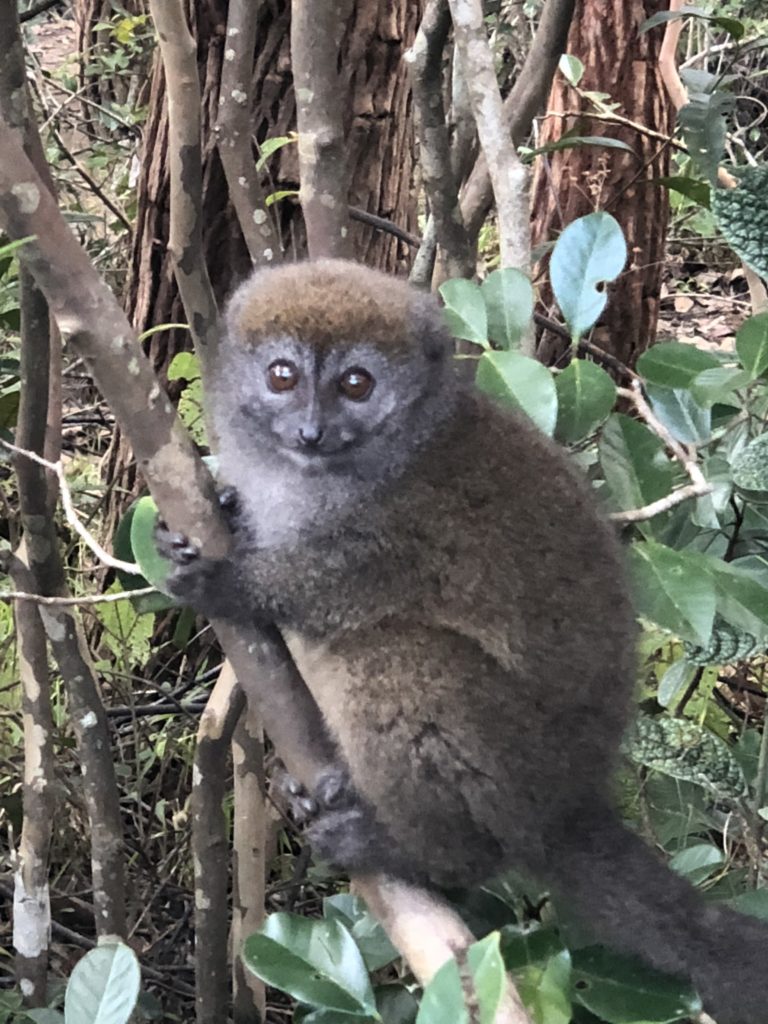


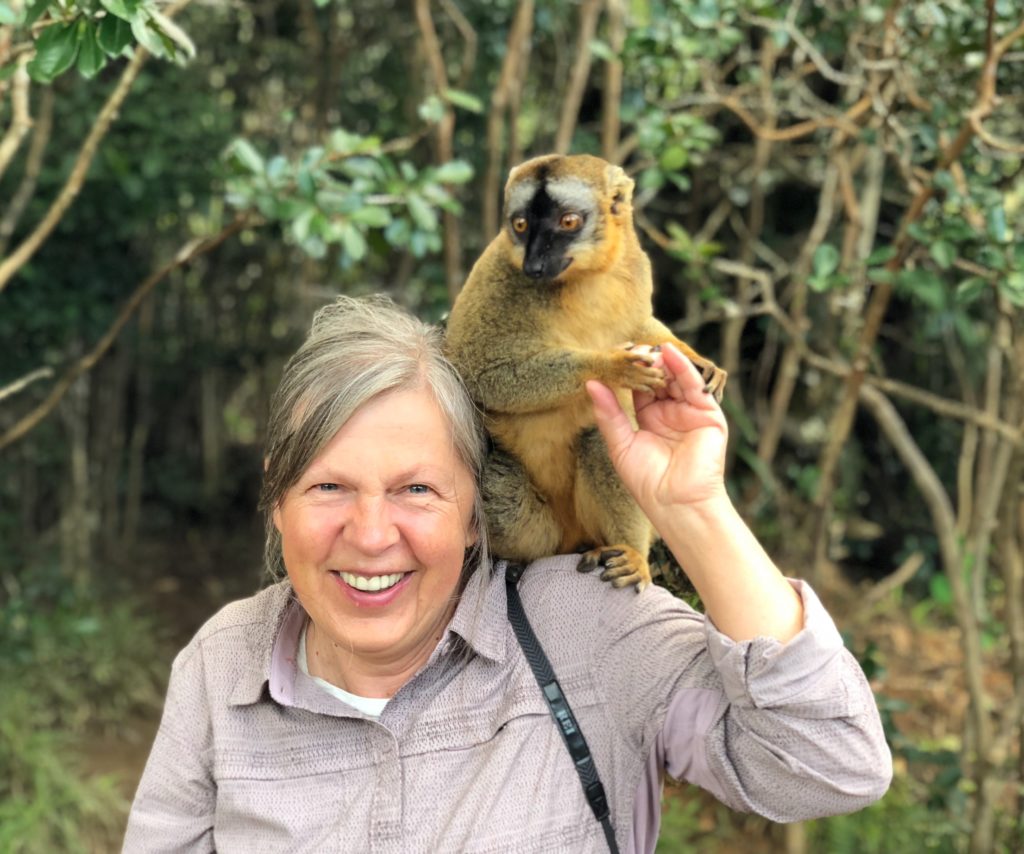
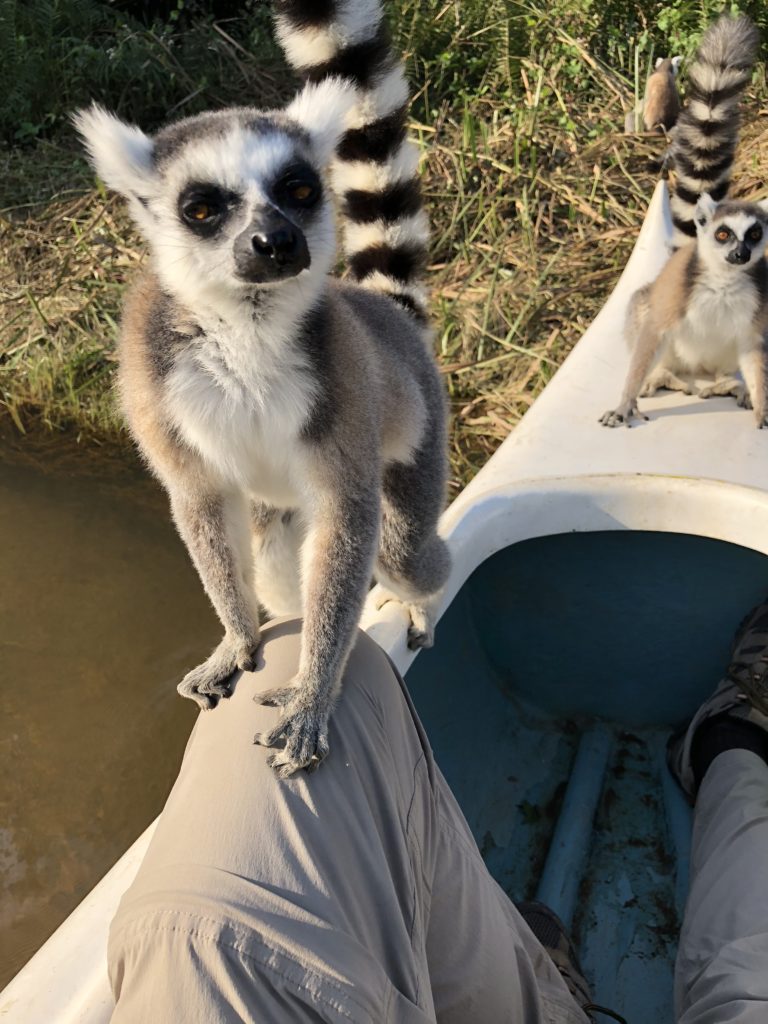
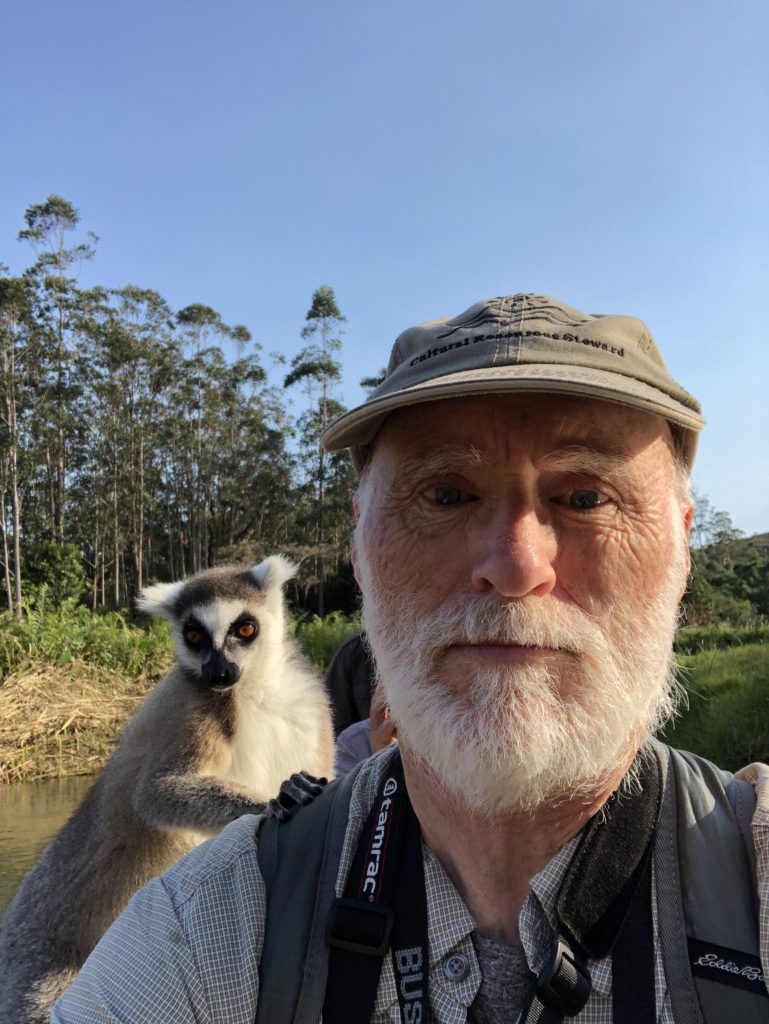

 Having had the extraordinary opportunity to see these truly amazing animals in their natural habitats, to experience the efforts underway to preserve and protect them and to know that such special animals exist in this world produces a deep sense of gratitude and wonder. We have been lucky enough to have glimpsed them, even for a moment and, through these few thoughts and accompanying photos, are glad for the chance to have shared some of that joy with you.
Having had the extraordinary opportunity to see these truly amazing animals in their natural habitats, to experience the efforts underway to preserve and protect them and to know that such special animals exist in this world produces a deep sense of gratitude and wonder. We have been lucky enough to have glimpsed them, even for a moment and, through these few thoughts and accompanying photos, are glad for the chance to have shared some of that joy with you.

